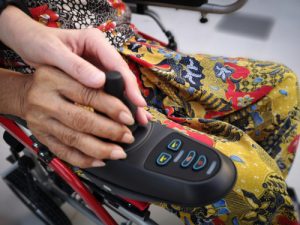 Navigating Public Spaces with an Electronic Wheelchair
Navigating Public Spaces with an Electronic Wheelchair
Public spaces are an essential aspect of our lives as they allow us to connect with others, receive services, and access various amenities. However, for individuals who use electronic wheelchairs, navigating through some of these spaces can be challenging. Many public spaces are not designed to be wheelchair user-friendly, making it difficult for individuals to access the services and amenities they require. This article will offer useful insights on how to navigate public spaces with an electronic wheelchair.
1. Understanding the Terrain
Before venturing out to a public space, it is essential to understand the terrain to avoid any unexpected challenges. Check the surroundings of the public space and consider the types of terrain you will face. For example, if the pavement outside the building has steep inclines, that could be problematic. Additionally, if the ground surrounding the building is cracked, uneven, or has loose gravel, this could also pose a challenge to electronic wheelchair users.
2. Research the Public Space Before Visiting
It is important to research the public space before visiting to learn more about the amenities available and how to access them. Many businesses now offer an online platform that displays their facilities, accessibility features, and parking arrangements. Knowing this information before visiting can help you plan and make necessary arrangements to ensure that you can access the space independently.
3. Accessible Entrances
When it comes to accessing public spaces, regrettably, not all entrances are designed to be wheelchair-friendly. Some buildings may have staircases with no accessible ramps or lifts, making it nearly impossible for wheelchair users to enter. Before visiting any public space, find out if the chosen entrance is accessible. If the primary entrance is not wheelchair accessible, try finding another entrance. In some cases, you may need to ask for assistance from a friend or family member, or even staff members.
4. Parking Accessibility
Accessible parking is essential for individuals using electronic wheelchairs. Traditional parking spots are typically not wide enough to accommodate wheelchair users, making it challenging to get out of the vehicle. However, with accessible parking spots, there is ample room between the vehicles, making it easy and safe for wheelchair users to park and exit the vehicle. When parking in a designated accessible parking spot, make sure that the parking area is flat and has an accessible route leading to the building.
5. Elevators and Lifts
Elevators and lifts are critical in public buildings as they enable wheelchair users to access different floors. However, not all buildings have these features. Before visiting a public space, find out if the building has elevators or lifts to facilitate movement. If there is no elevator, find out if you can access everything you need to from the first floor without requiring an elevator. If you need to use an elevator, ensure that it’s wide enough to accommodate the chair and that the building can provide assistance if required.
6. Navigating Through Public Spaces
Navigating through public spaces can be challenging without proper planning. Electronic wheelchair users should always look ahead and anticipate potential hazards such as stairs, uneven terrain, and moving obstacles. It’s essential to keep your wheelchair’s sensors, steering, and gears in optimal condition to ensure safety. It’s also advisable to travel at a comfortable speed, which gives you enough time to react to any obstacles or hazards.
7. Assistance From Others
In some cases, you may need assistance from others to navigate public spaces. It could be a friend, a family member, or even a staff member from the building. If you require assistance, inform the individual of the type of assistance you require. For example, if you need someone to lift you over a step or help open a door, be specific about it. Remember, being straightforward and precise will help ensure that assistance is provided safely and effectively.
In Conclusion
Navigating through public spaces with an electronic wheelchair can be a bit challenging, but it does not have to be. By researching and preparing adequately, you can ensure that you have a seamless experience accessing public amenities and services. Remember, proper planning can significantly minimize the challenges posed by public spaces, leaving you free to enjoy what the environment has to offer.
Want more advice about your electronic wheelchair? Be sure to contact our team of home medical equipment professionals here at Penn York Medical to learn more about what we can do for you!
